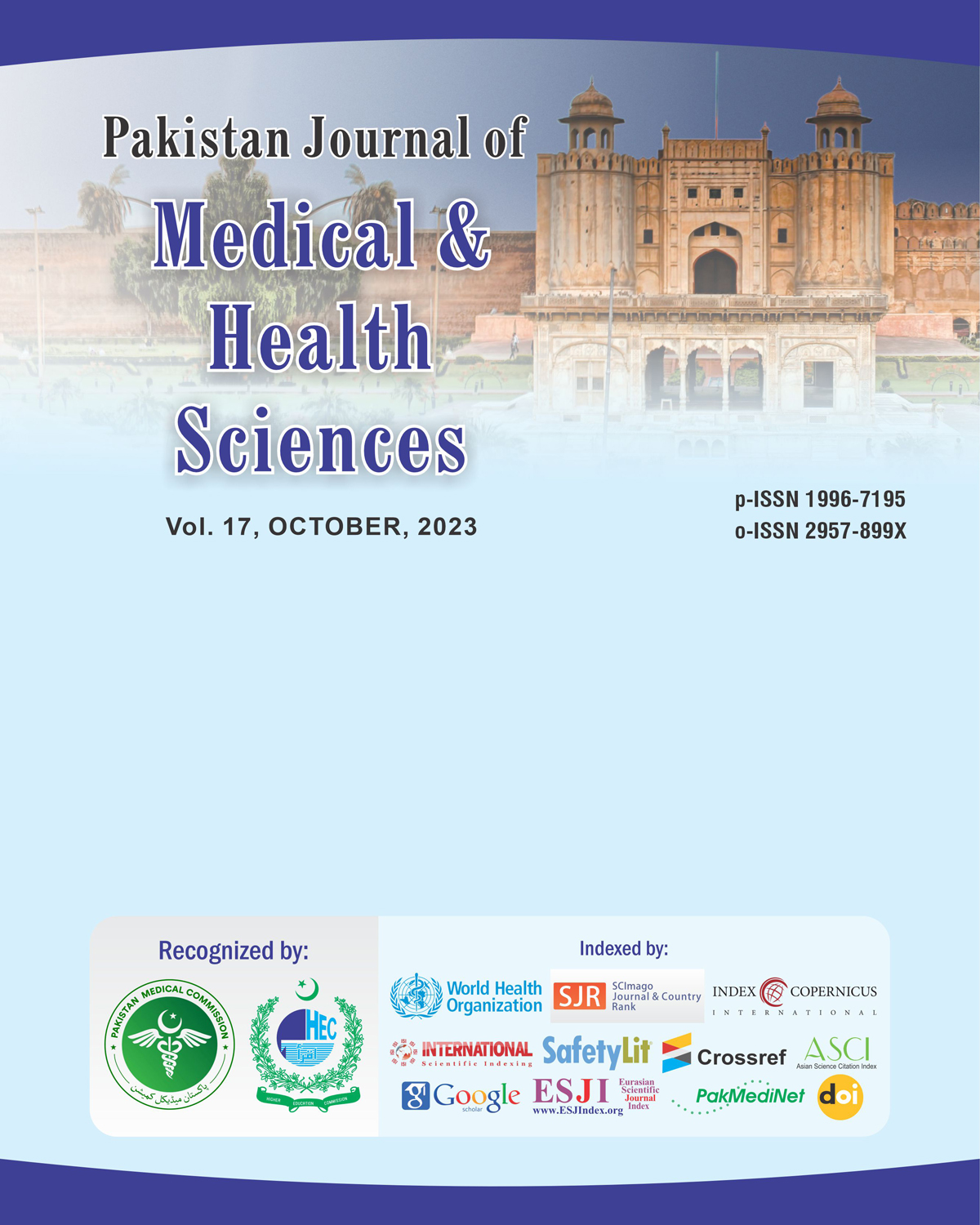Evaluation of MRI Findings in Patients with Non-Traumatic Low Back Pain and Their Correlation with Clinical Disability Scores
DOI:
https://doi.org/10.53350/pjmhs20231710164Abstract
Background: Low back pain (LBP) is one of the major causes of functional disability worldwide and is among the most common musculoskeletal disorders. Magnetic resonance imaging (MRI) is used extensively to detect spinal abnormalities, but many MRI findings have clinical significance that is controversial because degenerative changes are present in virtually all asymptomatic people.
Aims and Objectives: The purpose of this study was to examine MRI findings of patients with non-traumatic LBP and compare them to the clinical disability score measured by the Oswestry Disability Index (ODI). And the study also looked at the relationship of inflammatory biomarkers and demographic factors with disability severity.
Methodology: This was a cross-sectional study conducted at Gulab Devi Teaching Hospital and Children’s Hospital, Lahore, Pakistan, between July 2022 and July 2023. There were 80 patients ranging from 20 to 70 years suffering from non-traumatic LBP. The ODI was used for clinical disability assessment. Lumbar spine MRI was performed to measure disc degeneration, bulge, herniation, spinal stenosis, and facet arthropathy. High sensitivity C-reactive protein (hs-CRP), erythrocyte sedimentation rate (ESR), interleukin 6 (IL-6), tumor necrosis factor alpha (TNF-α), and vitamin D levels were analyzed in the blood samples. These statistical correlations were assessed using SPSS v 25.0.
Results: Of all the MRI findings, the most common were disc degeneration (77.5%) and bulge (60%). Significant positive correlation was found with ODI scores for the negative cases between ODI scores and disc herniation (p < 0.001) and spinal stenosis (p = 0.002). A moderate association with elevated hs-CRP and IL-6 was found with higher disability. Other risk factors included older age, diabetes, smoking, and manual labor occupations.
Conclusion: Key predictors of disability in non-traumatic LBP are disc herniation, spinal stenosis, and elevated inflammatory markers. Clinical, imaging, and laboratory assessments are used to better manage patients.
Keywords: Low back pain, MRI, Oswestry Disability Index, disc herniation, spinal stenosis, biomarkers
Downloads
How to Cite
Issue
Section
License
Copyright (c) 2023 Azqa Zafar, Shumaila Rana, Uzma Zaman, Kalsoom Anjum, Akhter Javed, Husnain Hashim

This work is licensed under a Creative Commons Attribution 4.0 International License.


